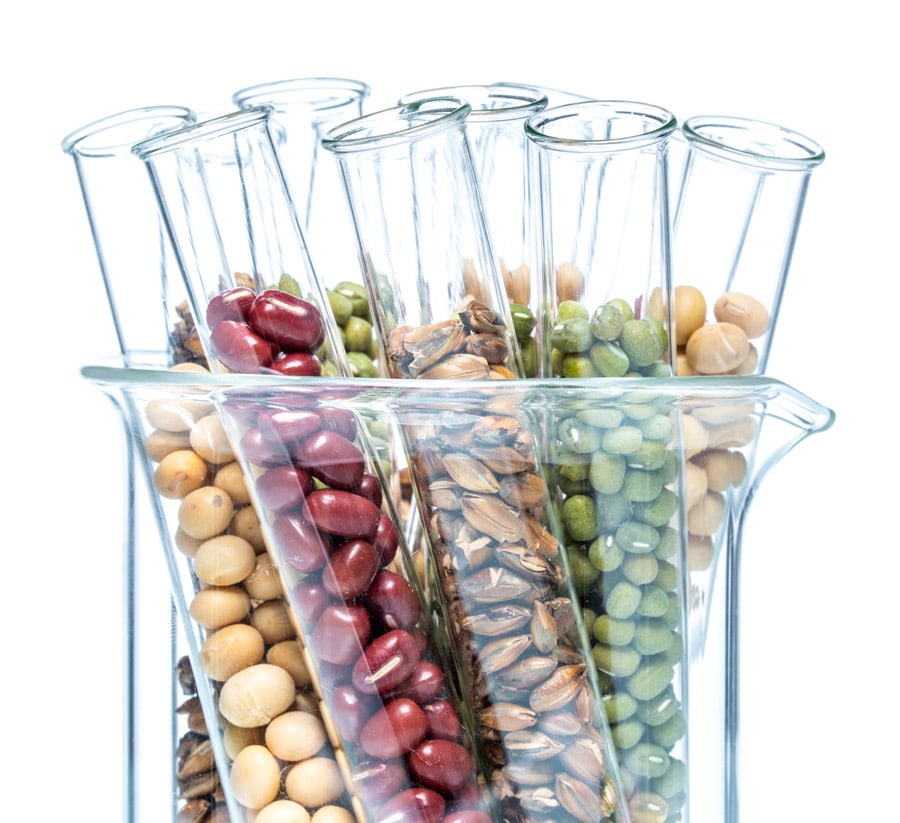Helping families nurture children: A paediatric tube feed with food-derived ingredients
Children who are unable to safely eat and drink, or unable to fully meet their nutrition and hydration requirements through oral intake may have a feeding tube fitted. There are a variety of different feeding tubes available, but the most common tubes used for long-term feeding are sited in the stomach and pass out through the body wall, providing a route by which artificial nutrition can be administered. This is called percutaneous endoscopic gastrostomy (PEG) and the most common route of feeding is via a PEG feeding tube, also known as a paediatric enteral tube. Children who are fed via an enteral tube often have complex health conditions, for example neurological disorders.
While enteral feeding allows children to meet their nutritional requirements safely, there may be issues with tolerating the feed and many will experience mild gastrointestinal intolerance symptoms such as nausea, diarrhoea or bloating. Some patients and parents also feel that the specialist diet sets them apart from family and friends.
Nestlé Health Science has developed a paediatric enteral tube feed which contains food-derived ingredients, inspired by the increasing use of food ingredients in blended diets.
The rise of blended diets
A blended diet is defined as blended food administered via an enteral feeding tube. There has been a recent increase in the use of blended diets in the UK, with homemade feeds replacing commercially prepared enteral feeds.

Although more research is still required, existing evidence suggests that a blended diet can have physiological benefits, including improvements in vomiting, reflux and abnormal bowel habits (Hurt et al, 2015). Anecdotally, parents have also reported improvements in their child’s overall physical and developmental health, including mood, skin, hair health and weight gain.
Furthermore, a small group of patients will not tolerate any available commercial feeds. While the underlying reasons for this are unclear, blended diets may be clinically beneficial for this patient group.
Psychosocial factors must also be considered; parents and carers of tube-fed children often feel as though they are providing better nutrition when blended diets are used. This contributes to a sense of empowerment and ownership of care, and families may be more likely to accept the placement of a feeding tube if they know they are still able to prepare food for their child (Coad et al, 2017).
The provision of a commercial feed which bridges the gap between a standard enteral feed and a fully homemade blended diet may be a useful stepping stone.
There are some risks associated with a blended diet if not done correctly and with support from a dietitian and other healthcare professionals. These include a risk of nutritional inadequacy if the blended diet does not contain the right nutrients in the right amounts (Sullivan et al, 2004). In contrast, reliance on a single formula (like a specific enteral tube feed) may impact upon the health of the gut microbiome – the bugs that live in the intestine – for which a varied diet (such as a blended diet) is likely preferable.
Professional guidance
The British Dietetic Association recently amended its guidelines to enable UK dietitians to consistently support a blended diet for tube-fed individuals, and to encourage an open, multidisciplinary approach to administering blended diets via a feeding tube (BDA Policy Statement). Prior to this, there had been a lack of clear professional guidance.
As blended diets increase in popularity and the guidelines change, Nestlé Health Science aims to support families and dietitians in their decision making. Availability of a new paediatric enteral feed using food-derived ingredients would bridge the gap between a full blended diet and the existing feeds. It could also facilitate engagement between parents and dietitians, as healthcare professionals may feel more confident in recommending a standard commercial blended diet-type product which is supported by scientific studies.

Isosource® Junior Mix
The UK is lagging behind other countries in terms of feeds containing food-derived ingredients; in the US, Compleat Pediatric, a Nestlé Health Science product, has been available for several years. A study carried out in 2016 showed that a tube feeding formula with food-derived ingredients is a cost effective and nutritionally adequate option for providing nutrition to children with intestinal failure. The same study also showed that Compleat Pediatric improved bowel habits, with all children stopping fibre supplements and stool softeners by the end of the trial (Samela et al, 2016).
Nestlé Health Science has now developed the first paediatric tube feed in the UK and Europe to include food-derived ingredients. Isosource® Junior Mix is a nutritionally complete feed, meaning that it can be used to meet a child’s full nutritional requirements, for example the right amounts of protein and fibre. It contains 13.8% food-derived ingredients, including rehydrated chicken, peas and green beans. Due to this, over half the fibre and a third of the protein in the feed is from food-derived sources. It is also convenient and does not require special storage conditions other than being stored in a cool dry place.
The team behind Isosource® Junior Mix envisage that it will bring benefits to three distinct groups: those who want to start following a blended diet but don’t have the confidence to do so; partial users who are already using some homemade blended diets; and on-the-go parents who are following a homemade blended diet but whose situations can at times make it difficult to prepare food.
Nestlé Health Science have now developed the first paediatric tube feed in the UK and Europe to include food-derived ingredients.
Planning and preparing blended diets at home requires a significant time and labour investment, as well as the financial cost associated with buying the correct equipment for blending food. For those parents without the time or resources to start a homemade blended diet, or where policy does not currently support a homemade blended diet, a formula like this could be a helpful option.
For families considering starting a blended diet, a commercial feed which bridges the gap between a standard enteral feed and a fully homemade blended diet may also be a useful stepping stone. For the dietitian supporting them, an easily prescribed option could assist the transition and enable families, carers and health care professionals to make a joint decision.

For patients who have already made the change to a homemade blended diet, Isosource® Junior Mix could be used as a top-up feed alongside homemade blended diets or as an ‘on-the-go’ option when a homemade blended diet could be logistically challenging. It would also provide options for patients who are usually on a blended diet, but are unable to have this in certain situations, for example in a hospital, hospice or special schools, thus respecting the feeding choices made by families.
Isosource® Junior Mix could also be used for any tube-fed child who has problems tolerating standard enteral feeds and who requires a nutritionally complete feed. Even for those families who are not interested in exploring a blended diet, the feed may have some benefits as discovered in the initial acceptability study.
Acceptability study well received
An acceptability study aimed to evaluate the gastrointestinal tolerance and compliance of Isosource Junior Mix® in 16 children aged 1 to 14 years with a range of medical conditions requiring tube feeding. These conditions included global developmental delay, epilepsy, cerebral palsy and Down’s syndrome. After a 7-day trial of the feed, the dietetic departments found that the volume of feed and the feed itself was well tolerated by the majority of participants (Thornton-Wood et al, 2019). Indeed, some showed a decrease in gastrointestinal symptoms and others showed beneficial changes in stool type, such as previously loose stools becoming firmer and less frequent. Other benefits included improvement in reflux and decreased retching. Some evidence suggests whole food blends or blended diets may promote a healthy microbiome, but further research is required to confirm these observations.
These data were presented at a recent conference focussed on the nutritional aspects of children with digestive disorders (European Society of Parenteral and Enteral Nutrition – ESPEN) in 2019, Poland, as well as at British Society Paediatric Gastroenterology Hepatology And Nutrition – BSPGHAN in 2020, Brighton, UK and were well received, suggesting there is indeed an interest in a full range of enteral tube feed products containing food-derived ingredients in the future.
Next steps for Nestlé Health Science
This is just the start of the journey, both for parents and for Nestlé Health Science.
Nestlé Health Science continues to conduct research into the benefits of food-derived ingredients in tube feeds, with the aim to continue helping families introduce “real food” into their children’s diets. For example, in the UK they are currently developing a series of recipes which could be used in conjunction with Isosource® Junior Mix to provide a balanced diet. For those starting out on a blended diet, products such as Isosource® Junior Mix provide a ‘best of both’ approach; it is a safe, commercially available, nutritionally balanced feed which contains food-derived ingredients. It could also be used by those already on a blended diet as a top-up feed, when convenience means blending is unfeasible or by families without the capacity to prepare blended meals.

There is a clear need for a collaborative approach, with industry and healthcare professionals working together. Ultimately, the availability of a tube feed formula using food-derived ingredients such as Isosource® Junior Mix, will support dietitians to help families.
Personal Response
Why did you first become interested in dietary research?
<>Dr Clare Thornton-Wood: I have always been interested in research, well before I commenced my career as a dietitian. As a child I enjoyed opening up batteries, making a record player from a biscuit tin, experimenting with soil analysis kits and making ’shower gel’ from seawater after my dad told me seawater made his skin feel better. After completing my first degree in music I then went on to do a PhD in musical instrument reeds. This was driven by my being an oboist and relying on the unreliable quality of the reeds and the potential search for a viable synthetic alternative. I have always been interested in food and how this impacts on behaviour and health, in particular in children, and this led naturally to a return to studying for a degree in nutrition and dietetics. Becoming involved in studies for new products seemed a natural extension of this.
What do you find most satisfying/enjoyable about your work?
<>Dr Clare Thornton-Wood: My day job is in paediatric dietetics in a children’s hospital and every day is different. I enjoy building a rapport with families and helping them to improve the diet and health of their children and increasing their knowledge of nutrition. I am also a spokesperson for the British Dietetic Association (BDA) and this has presented some wonderful opportunities across a range of media such as TV, radio, newspaper and magazines. I find this really fulfilling, enabling the dietetic profession to ensure that well-evidenced nutrition information is available to the public and enabling us to quash dubious messages.
How do you hope the Isosource® range will develop in future?
<>Dr Clare Thornton-Wood: The Isosource® product is a really useful and innovative addition to the products currently available and fills a gap in the market. My vision for the current product would be for it to be rolled out in different ‘varieties’ to perhaps mimic the types of food eaten. My immediate thoughts are to include different protein and vegetable/fruit types and consider a vegetarian and perhaps even a vegan one to cater for varying diets.